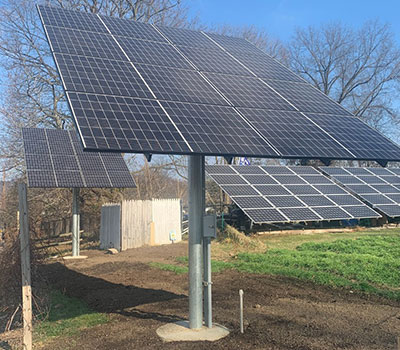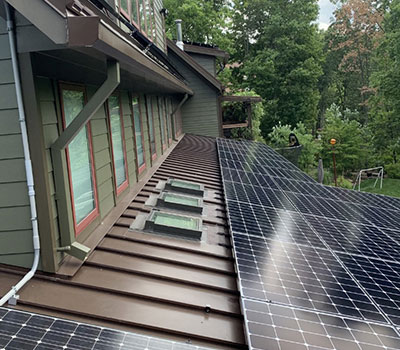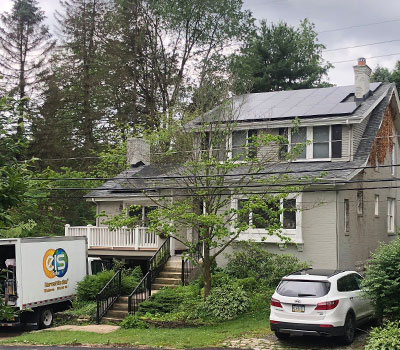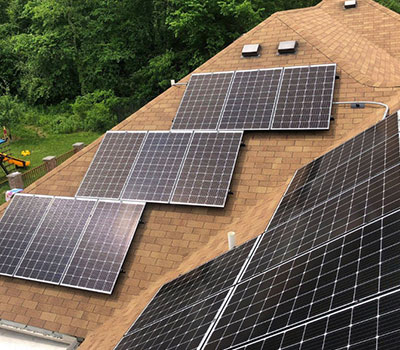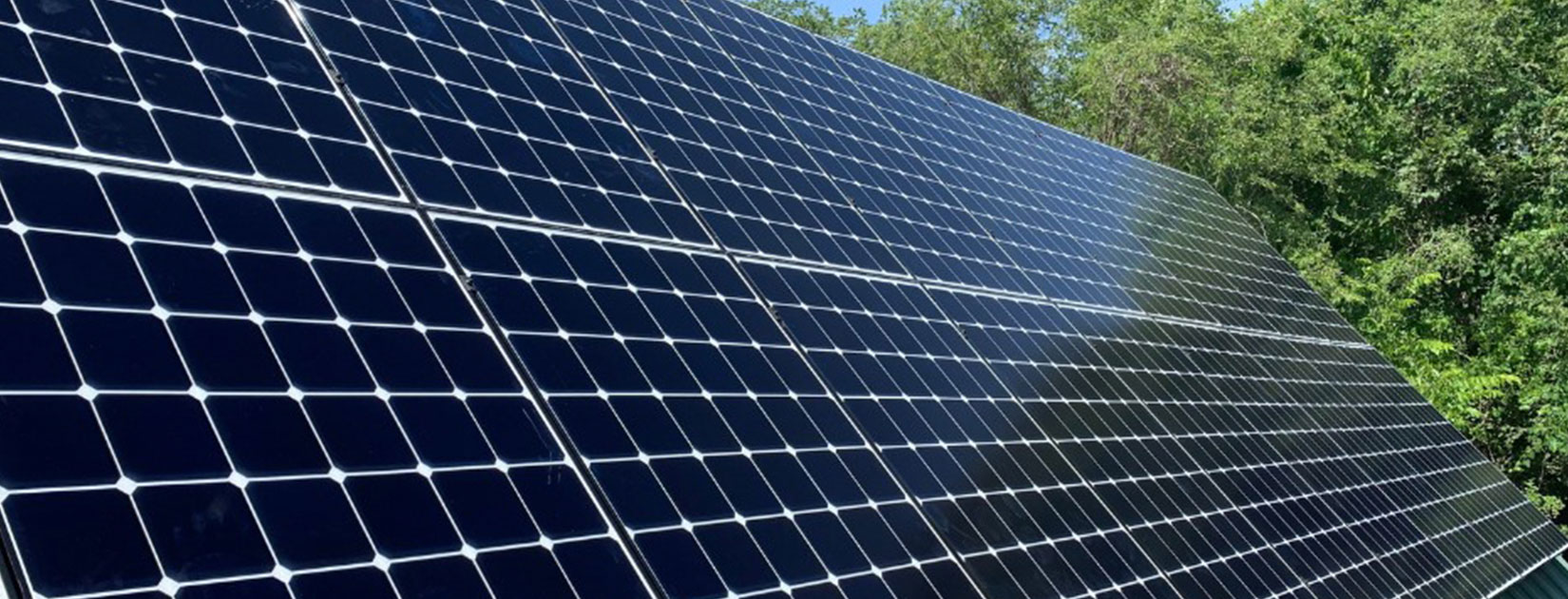
Solar Materials
Solar Panels, Solar Inverters, and Solar Racking
What makes a good solar panel? This is the primary component of your array and your biggest investment. You should give this serious thought before choosing. There are hundreds of new solar panel manufacturers on the market today that were not here five years ago. Though they may have inexpensive panels and grand boasts of efficiency and quality, many are untested through time. You may be able to save a few dollars today, but who will replace panels if they fail ten years from now?
Types of Solar Panels
Heterojunction: These solar cells combine two different technologies into one cell: a crystalline silicon cell sandwiched between two layers of amorphous silicon. This results in the absorption of extra photons that would otherwise not get captured by the middle crystalline silicon wafer, allowing more energy to be harvested easily when compared to conventional silicon solar panels
Monocrystalline silicon means the entire silicon wafer is center cut from a single silicon ingot.
This is one of the most efficient methods of making solar panels and generally the most expensive type of panels you can buy. Since it is more efficient, you can use fewer panels to get the same result. These panels are also often cut from the best silicon and are generally more reliable and perform better in real world settings. Monocrystalline panels are easy to identify. They generally have a white pattern between each cell and small white diamonds at the corner of each cell. Energy Independent Solutions uses Monocrystalline Panels for most of our installations.
Polycrystalline silicon is when they take all the parts and pieces from the monocrystalline cell production lines and use them to make a panel. These panels are very good, nearly as high quality as Monocrystalline. It is easy to identify them by sight, they will have a solid iridescent blue color and be striped with solder connections in a grid pattern.
EIS provides bifacial options because of its superior construction. Silicon is encapsulated in glass, both front and back, which protects it from microfacturing in shipping and wind vibrations. This provides a more robust solar panel module that lasts much longer than a standard module. It can produce from the back side but the real reason we use it is the longer warranty period, 30 years, and the robustness of the design. It's just a better product than traditional solar modules.
New technology is bringing new products to market every day. EIS Solar stays ahead of the curve by embracing and adapting to new technologies as they become released. EIS Solar will always offer the highest level of solar technology available after thoroughly testing these products to ensure the level of efficiency matches the investment for our solar customers. If you’re wondering about a new solar technology that has hit the market, don’t hesitate to reach out for feedback from our experienced solar professionals.
Do you know who manufactured it?
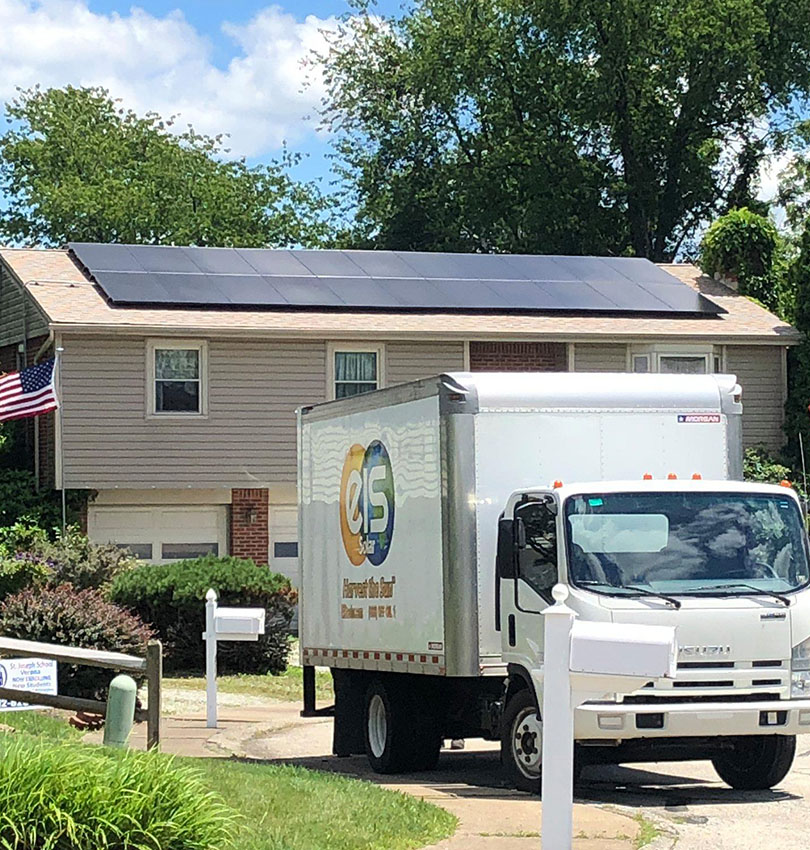
Several years ago panel production machine prices dropped significantly with their introduction of small, self‐contained micro-plants. These machines can be purchased anywhere from $30,000 to $50,000 and part of the package is a guarantee that the panels will be accepted by the state of CA solar program. If a panel is accepted in CA, it is accepted throughout the US, including PA. Essentially this means a company can start producing panels in a garage somewhere today and stamp them with a 25-year warranty tomorrow. They have no track record and no way to back up their warranty, but they still have the ability to sell on the US market. Considering the cost of the investment, ‘Buyer Beware’ is a huge understatement.
Choose a reputable Panel manufacturer.
Have you heard of them? Is there more data than a fancy website? Can you call other folks like you who are actually using their product, or do they just have bold product claims and a fancy website? Are they publicly traded? Do they have public financials available?
Look at the method of manufacturing.
Are they using compression to produce the panels without screws and attachments that can loosen over time? Are the contacts welded or screwed? Are the wires enclosed in solid plastic or are they attached loosely in a box to vibrate loose over time?
How long has the manufacturer been in business?
Ensure the company has been around long enough to establish a proven track record; this way, you know that they are likely to be there down the road should an issue pop up.
How long is their solar panel warranty?
Does it last longer than they have been in business?
Does it drop in tiers or is it Linear meaning it prorates over time?
What is the tolerance?
Do the solar panels have a good ‘tolerance’ level? Each panel has a rated number of Watts it will produce in perfect laboratory conditions. These range from +10% to ‐10%, meaning a 100-watt panel could produce 90 Watts or 110 Watts. Since you are paying for panels by the Watt, it is important to know you are getting the same or better than the rated Watts.
Look for panels that have a +‐3% or a ‐0%+3% or 5% rating.
Some manufactures use methods like Plus Sorting that ensure all panels outperform rated Watts. This ensures you get what you pay for and most times a little more.
What makes a good racking system?
Is it a ‘solar engineered’ racking system or did your contractor pick up a bunch of parts from Home Depot and slap them together?
Make sure you are getting a quality racking system either coming from a reputable racking company or one that has engineering documentation available.
Is it engineered for 90‐120mph wind loading and 25‐35 lb snow loading?
What makes a good roof penetration?
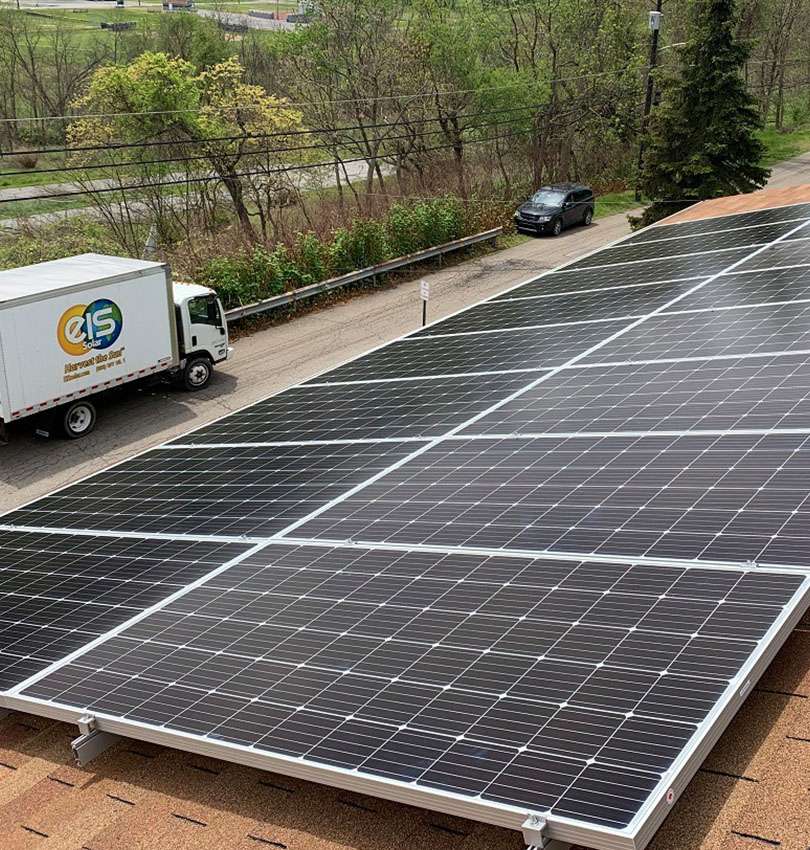
What kind of roof sealant are they using?
There are many ‘outdoor’ rated sealants but not all are created equal. You are building an array that you intend to have on your roof for the next 30 years. You need to ensure all parts of the installation are built with this in mind including the caulking. Make sure your contractor uses the highest quality caulking available, like Solar Seal.
Are they flashing the penetration or just using ‘L’ brackets?
Flashing is critical on shingle roof installations. There are a very few contractors in Western PA that use flashing other than Energy Independent Solutions. Every installation we have seen, other than ours, has attached the array to the roof using an ‘L’ bracket and no flashing. Once again, you are building something that will be on your roof for 30 years, you’ll need the roof penetration to last that long and not leak. Simply attaching racking systems directly to a roof without using any flashing is irresponsible and will cause problems down the road. You will be the one paying to have the array removed so it can be corrected. Ensure flashing is used on each penetration. Have the contractor provide pictures of other installations that show how they flash the penetrations.
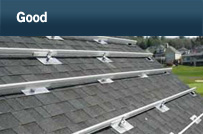
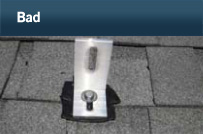
WHAT MAKES A GOOD SOLAR GROUND MOUNT SYSTEM?
The key to a good solar panel ground mount, beyond being fitted with a quality racking system, is ensuring that it’s going to be maintenance-free when it is done.
Ensure rock underlayment and a weed barrier are used to eliminate the need to mow and trim around the wiring under the array.
Ensure only galvanized steel, stainless steel and structural aluminum is used in the structure so you will not need to repaint year after year.
Ensure the concrete piers or foundation points are finished and tapered so water does not pool around posts allowing ice and water to damage the connection to the ground.
Ensure all wiring is lightly attached to the racking system so it will not rub and wear when the wind blows.
